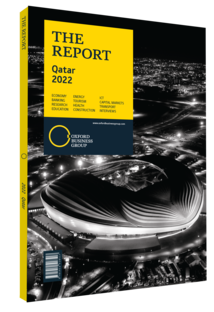Abdulla bin Abdulaziz bin Turki Al Subaie, Managing Director and CEO, Qatar Rail; and Minister of Municipality: Interview

Interview: Abdulla bin Abdulaziz bin Turki Al Subaie
What are the current priorities for the public transport system under Qatar National Vision 2030?
ABDULLA BIN ABDULAZIZ BIN TURKI AL SUBAIE: A high-quality, integrated public transport network consisting of metro, tram and bus routes is vital to accomplishing the goals of Qatar National Vision 2030. Current priorities include expanding mobility choices that reduce dependence on automobiles and increase public transport use, and providing environmentally friendly transport solutions such as the electrification of public buses. As of late 2021 Qatar had already achieved the electrification of 25% of its public bus fleet and established associated charging infrastructure. Overall, the aim is to make public transport the preferred choice for the residents of Doha.
To what extent has the Covid-19 pandemic impacted work on rail infrastructure and services?
AL SUBAIE: To prevent the spread of Covid-19, the government took restrictive measures that included suspending the Doha Metro and all other public transport services for more than five months in 2020. Metro passengers were forced to rely on private means of transport, and this certainly had an impact on the public transport system. With restrictions having eased in 2021, Qatar Rail is focusing its efforts on regaining the confidence of passengers and ramping up ridership.
The pandemic provided an opportunity for strategic and creative thinking, resulting in a stronger focus on technology such as using QR codes and mobile ticketing apps instead of physical tickets, and informing passengers about crowded platforms and trains via mobile app. We have also paid significant attention to the future design of trains and stations in order to make passengers feel more secure.
Which technological innovations do you envision having the greatest impact on the transport sector?
AL SUBAIE: Mobility as a Service aims to emulate private transport by providing door-to-door solutions. This must be supported by mobile apps that share real-time information between commuters and transport service providers, as well as artificial intelligence to reduce human intervention and boost efficiency – for example, through autonomous public transport vehicles.
On-demand public transport is another area where we are making great strides: we have been working with the Ministry of Transport on an on-demand ride-sharing service called metroexpress since July 2019. Other practical applications of technology in transport include integrated ticketing and fare-collection systems; operations and fleet management through automated vehicle location and computer-aided dispatch systems; and in-vehicle surveillance to improve the safety of passengers and operators.
How can rail transport contribute to wider environmental sustainability?
AL SUBAIE: Railways are among the most environmentally friendly means of transport. For example, a typical rail journey results in up to 90% fewer carbon emissions than car travel. Once our network is more mature, we expect to carry approximately 450,000 passengers per day, replacing 170,000 vehicles on the road and preventing 200 tonnes of emissions of CO equivalent per day. In particular, Qatar’s rail transport modes that utilise electric traction are a much more sustainable form of getting around than a private vehicle, helping to limit the consumption of natural resources and supporting waste management efforts.
Metro operations use modern technology in system assets, rolling stock and power supplies. When in use on the network the rolling stock will send energy back into the power rail through a regenerative system when braking, and the energy can be used by other nearby trains. Efforts are being made to significantly reduce carbon emissions from the bulk power supply of rail operation by securing electricity from renewable energy sources rather than from dedicated power stations.
You have reached the limit of premium articles you can view for free.
Choose from the options below to purchase print or digital editions of our Reports. You can also purchase a website subscription giving you unlimited access to all of our Reports online for 12 months.
If you have already purchased this Report or have a website subscription, please login to continue.

